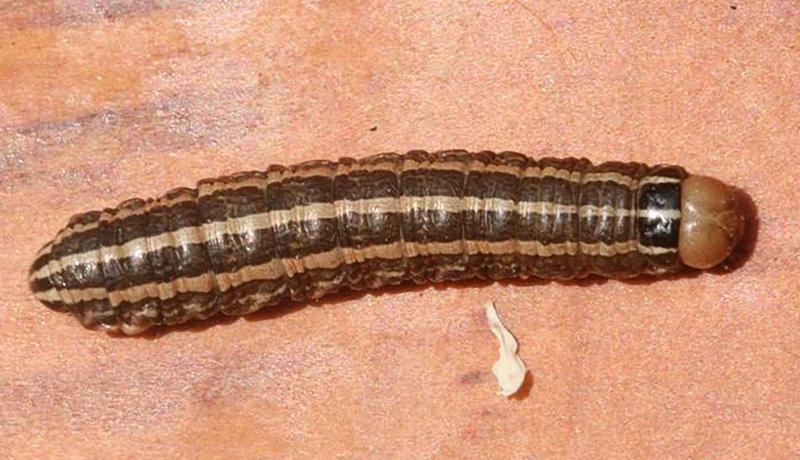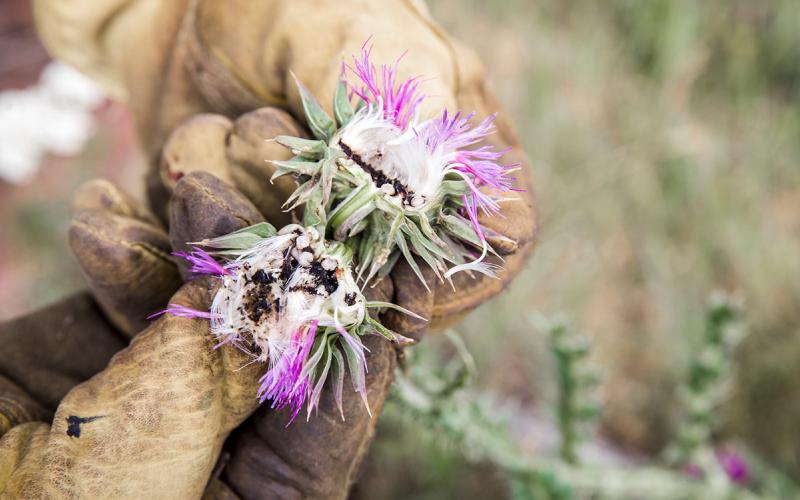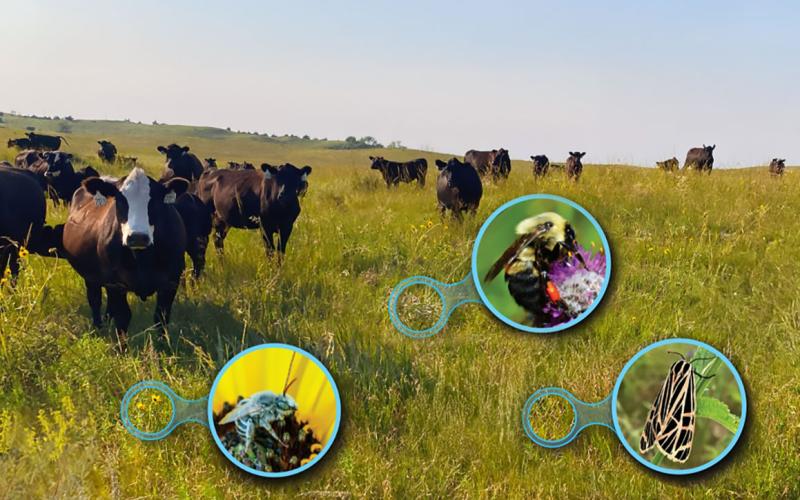Bronzed cutworms are not a common pest of corn in South Dakota. However, they can become an issue when corn is planted into areas that were previously grassland. Like its name implies, bronze cutworms feed on corn above the soil surface, which often results in cutting or clipping.
Identification

Bronzed cutworm caterpillars are dark brown with a bronze sheen. These caterpillars have three yellow stripes that run the length of the bodies (Figure 1). They also have three pairs of true legs and four pairs of abdominal prolegs. When fully mature, the caterpillars are approximately 1.5-1.75 inches in length.
Scouting
Scouting for bronzed cutworm is difficult because the caterpillars are nocturnal and hide during the day. Therefore, scouting involves finding corn plants with signs of caterpillar feeding on the leaves or around the base of the stalk, or the presence of cut plants. Scouting should begin during corn emergence (VE) and continue weekly until V5 leaf stage. An insecticide treatment is recommended if greater than 5% of corn plants are cut and any bronzed cutworm caterpillars that are found are less than 1 inch in length.
Management
Management before September in fields that are going to be planted to corn can reduce the risk of injury to corn from bronzed cutworm as the moths lay their eggs in grassy areas from September to October. In addition, the use of foliar insecticides in conjunction with scouting for cut corn and caterpillars is also effective. Currently registered insecticides for management of cutworms in corn are listed in the current edition of the South Dakota Pest Management Guide: Corn.


